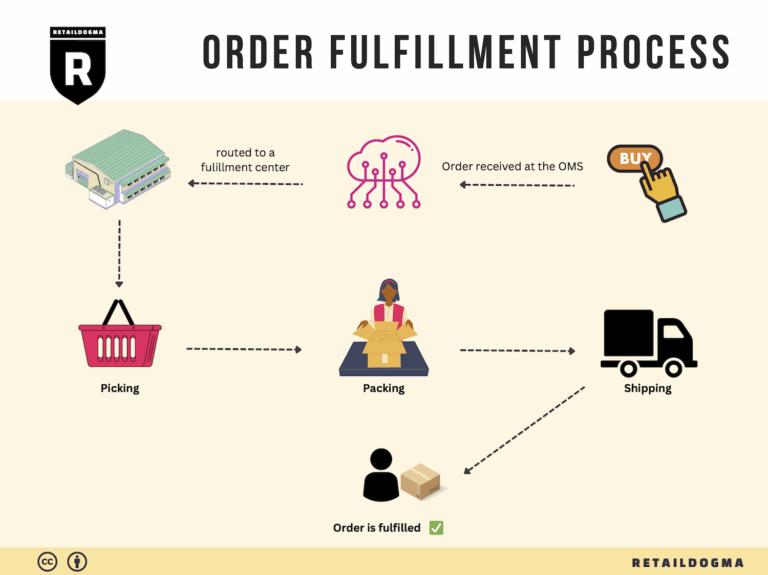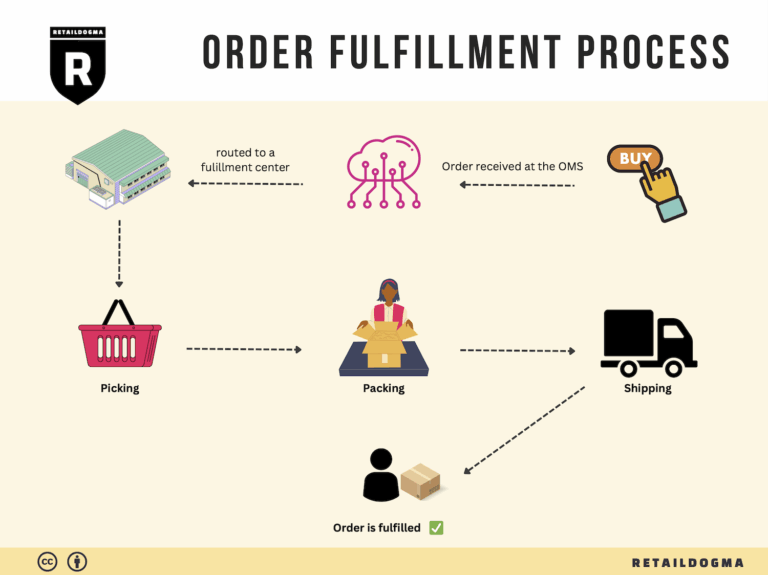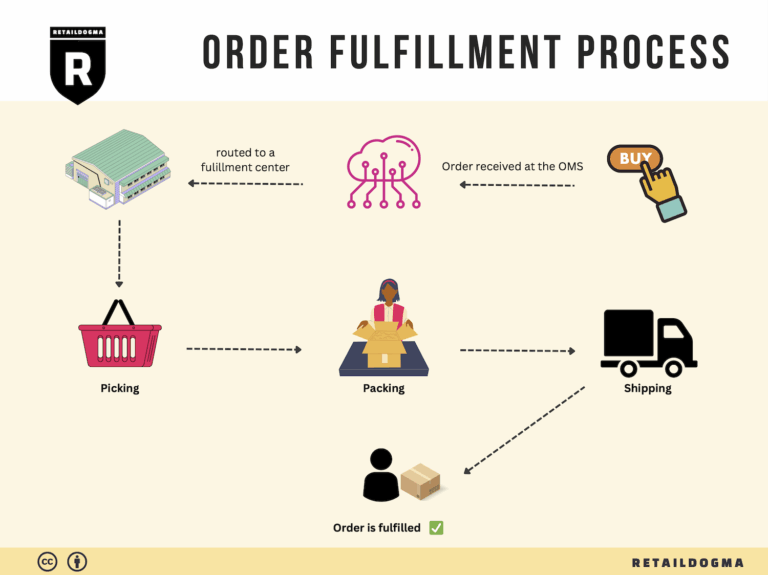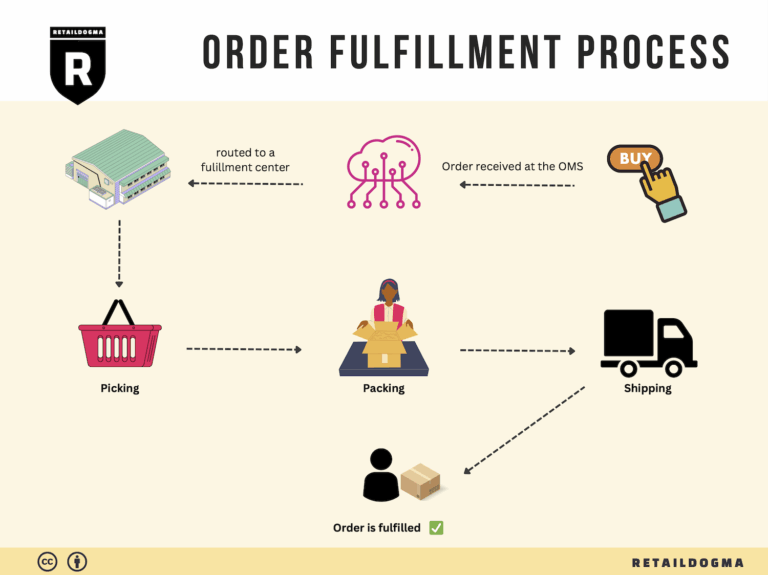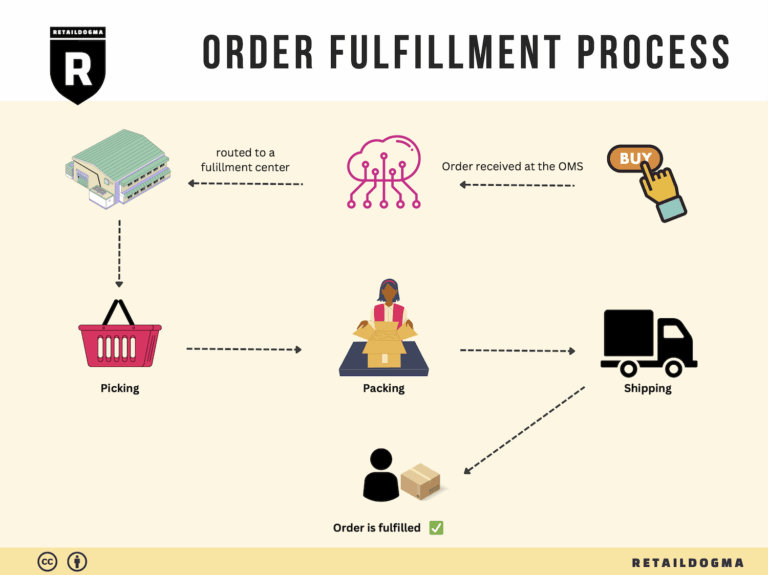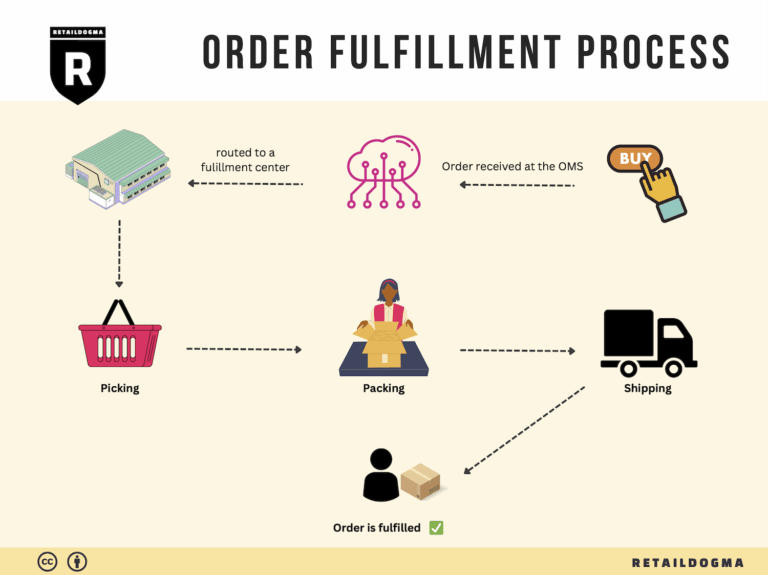How Order Fulfillment Works: A Step-by-Step Guide for Businesses
What is E-commerce Fulfillment? An Introduction for Growing Businesses
As your e-commerce business begins to grow, you may find yourself grappling with the overwhelming task of packing and shipping orders efficiently. The excitement of increased sales can quickly turn into stress when faced with the logistical challenges of fulfilling customer orders. This is where understanding the concept of fulfillment becomes essential.
Fulfillment refers to the comprehensive process of getting a product from your warehouse to your customer’s doorstep. This involves everything from receiving inventory and storing products, to packing orders and managing shipping. A well-structured fulfillment strategy not only ensures that your customers receive their orders promptly but also enhances their overall shopping experience, leading to repeat business and positive reviews.
In this guide, we will explore the various fulfillment models that can support your growing business. We’ll discuss options such as Third-Party Logistics (3PL) providers and Fulfillment by Amazon (FBA), both of which offer unique advantages depending on your specific needs. Understanding these models will help you determine which is best suited for your operational goals.
Moreover, we will outline the core services typically included in fulfillment, such as inventory management, order processing, and shipping logistics. Knowing what services to expect from your fulfillment partner is crucial for ensuring that your business runs smoothly and that your customers are satisfied.
Choosing the right fulfillment partner is a critical decision that can impact your business’s efficiency and profitability. We will provide insights on what to look for in a partner, including their technology capabilities, customer service, and scalability options.
Pricing is another essential aspect of fulfillment that we will address. Understanding the cost structures associated with different fulfillment options will enable you to make informed decisions that align with your budget and financial goals.
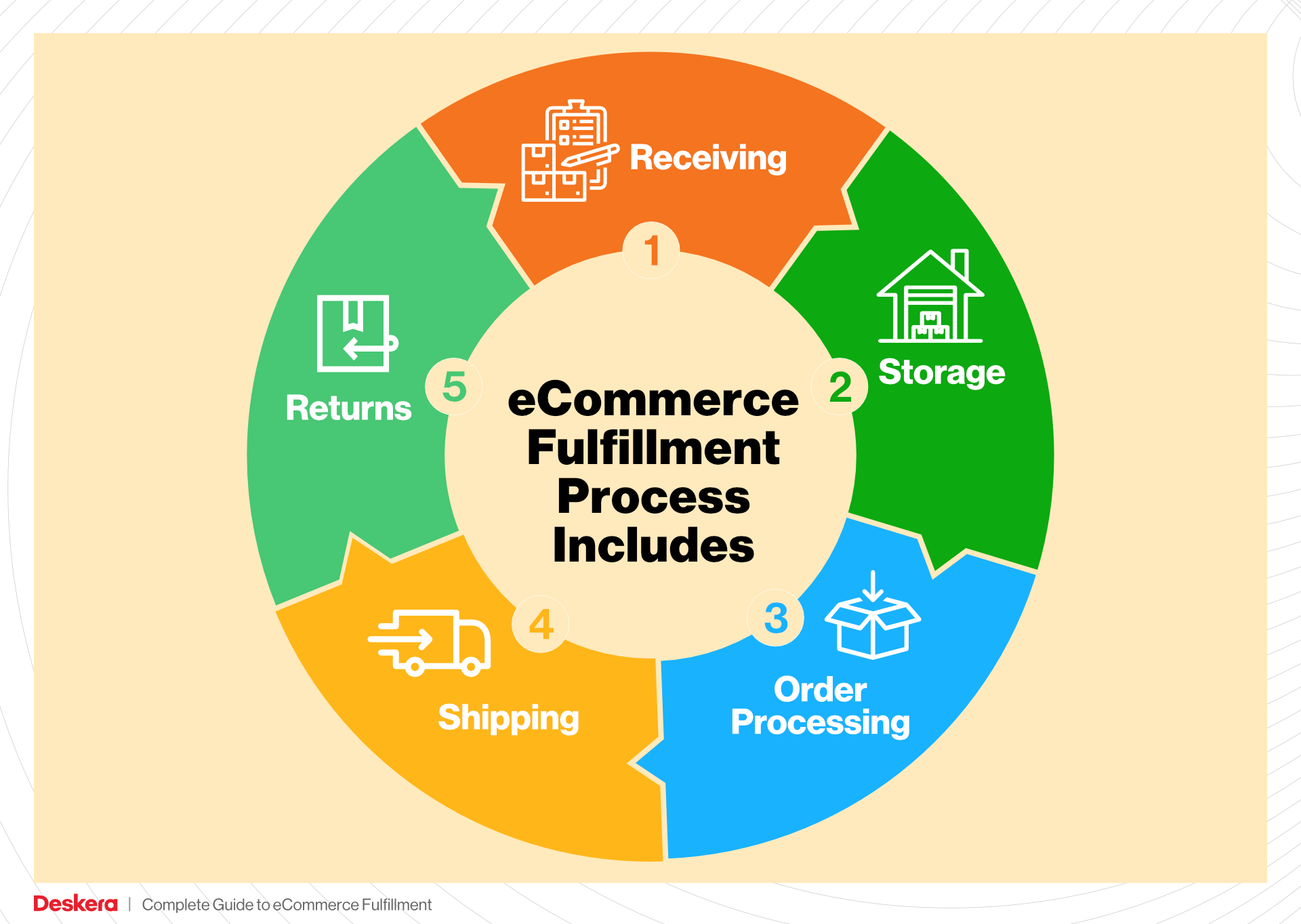
Our goal with this guide is to empower you, the business owner, with the knowledge and tools necessary to make strategic decisions about your logistics. By streamlining your fulfillment process, you can focus on what matters most—growing your business and delighting your customers.
What You’ll Learn In This Guide
- What is E-commerce Fulfillment? An Introduction for Growing Businesses
- The Order Fulfillment Process: From ‘Buy’ Button to Customer’s Door
- Comparing Fulfillment Models: In-House vs. 3PL vs. Dropshipping
- A Deep Dive into Amazon FBA: Pros, Cons, and Who It’s For
- Core Services Offered by Fulfillment Centers
- How to Choose a Fulfillment Partner: A 6-Point Checklist
- Understanding Fulfillment Pricing: A Breakdown of Common Fees
- Frequently Asked Questions (FAQs) about Fulfillment
- Conclusion: Is Outsourcing Fulfillment the Right Move for Your Business?
- Important Disclaimer
The Order Fulfillment Process: From ‘Buy’ Button to Customer’s Door
1. Receiving Inventory
The first step in the order fulfillment process is receiving inventory at the fulfillment center. This involves the careful inspection and logging of products that arrive from suppliers or manufacturers. Each item is checked against purchase orders to ensure accuracy and quality before it is entered into the inventory management system.
Importance: Properly receiving inventory is crucial because it sets the foundation for the entire fulfillment process. Inaccuracies at this stage can lead to stockouts, overstock situations, and customer dissatisfaction.
Key Term: SKU (Stock Keeping Unit). Each product is assigned a unique SKU that helps in tracking inventory levels and simplifying the management of stock.
2. Warehouse Storage
Once inventory is received, the next step is to store the items in an organized manner within the warehouse. This involves categorizing products based on various factors such as size, type, and demand frequency. Efficient storage solutions, such as shelving and bins, are utilized to maximize space and accessibility.
Importance: Effective warehouse storage is vital for optimizing space and facilitating quick access to products. A well-organized warehouse reduces the time taken to locate items during order fulfillment, ultimately improving operational efficiency.
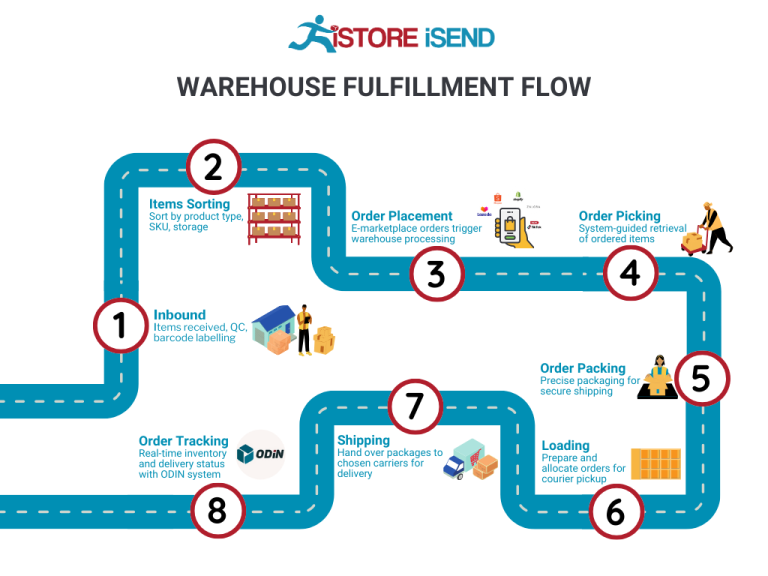
Key Term: ABC Analysis. This inventory categorization technique helps businesses prioritize their stock based on value and turnover rates, ensuring that high-demand items are more accessible.
3. Order Picking
Order picking is the process of retrieving items from storage based on customer orders. When a customer places an order, a pick list is generated, detailing the items and their locations in the warehouse. Fulfillment center staff then use this list to gather the required products.
Importance: This step is critical because the accuracy and speed of order picking directly affect customer satisfaction. Errors in picking can lead to incorrect shipments, resulting in returns and dissatisfied customers.
Key Term: Pick Lists. These documents guide warehouse employees in collecting items efficiently, ensuring they retrieve the correct products in the right quantities.
4. Order Packing
After items are picked, they move to the packing stage. Here, products are securely packed into boxes or envelopes, often using protective materials to prevent damage during transit. Packing slips, which provide details about the order, are typically included in the shipment.
Importance: Proper packing is essential to ensure that products arrive at the customer’s doorstep in perfect condition. It also helps in branding; well-packaged orders can enhance the unboxing experience and foster customer loyalty.
Key Term: Packing Slip. This document accompanies the shipment and includes important information such as order details, shipping address, and return instructions, serving as a confirmation for customers.
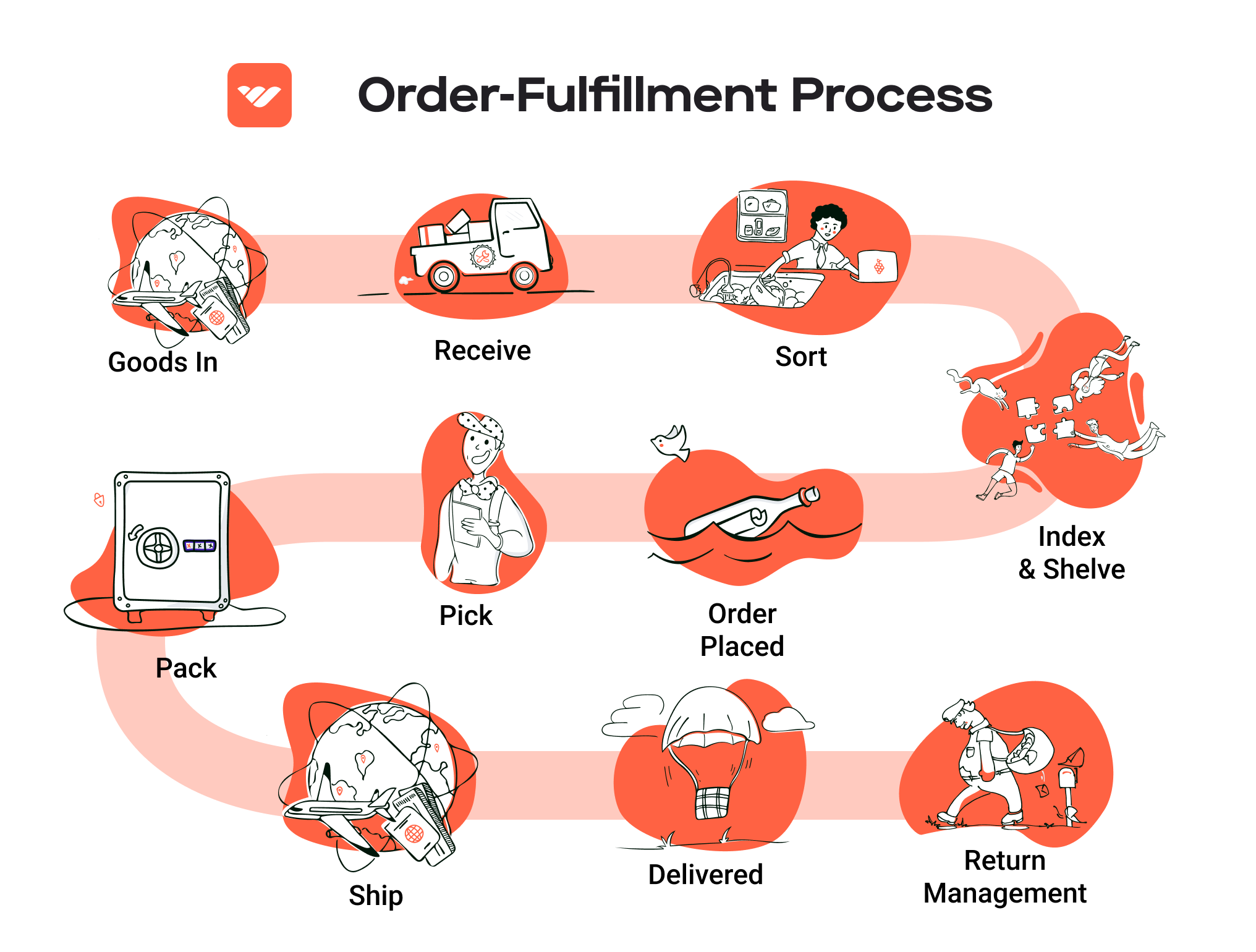
5. Shipping & Delivery
The final step in the order fulfillment process is shipping and delivery. Once packed, orders are labeled and handed over to carriers for transportation. The choice of shipping method (standard, expedited, etc.) depends on customer preferences and business capabilities.
Importance: Timely and reliable delivery is crucial for customer satisfaction and retention. Customers expect their orders to arrive quickly and in good condition, making this step a decisive factor in their overall shopping experience.
Key Term: Last-Mile Delivery. This refers to the final leg of the shipping process, where the package is delivered from a transportation hub to the customer’s address. Efficient last-mile delivery is essential for meeting customer expectations and reducing delivery costs.
Conclusion
Understanding the order fulfillment process is vital for e-commerce businesses aiming to scale their operations. Each step—from receiving inventory to shipping and delivery—plays a significant role in ensuring customer satisfaction and operational efficiency. By optimizing these processes, businesses can improve their fulfillment speed, reduce errors, and enhance the overall customer experience.
Comparing Fulfillment Models: In-House vs. 3PL vs. Dropshipping
Fulfillment Model Comparison
| Model | Who Handles Inventory | Best For (Business Stage) | Key Advantage | Key Disadvantage |
|---|---|---|---|---|
| In-House Fulfillment | Business itself | Startups to Mid-Sized Companies | Full control over operations and brand | High overhead costs and resource demands |
| Third-Party Logistics (3PL) | External provider | Growing Companies | Scalable solutions with expert logistics | Less control over inventory and processes |
| Dropshipping | Supplier | New Businesses & Entrepreneurs | Low upfront investment and risk | Lower profit margins and reliance on suppliers |
In-House Fulfillment
In-house fulfillment involves managing the entire inventory and logistics process within the organization. This model is most suitable for startups and mid-sized companies that have established their product lines and are looking to maintain complete control over their fulfillment process. The key advantage of in-house fulfillment is the ability to control every aspect of the order fulfillment process, from inventory management to packaging and shipping. This control allows businesses to ensure quality, brand consistency, and responsiveness to customer needs.
However, the primary disadvantage is the high overhead costs associated with maintaining a warehouse, hiring staff, and managing logistics. Businesses must invest in facilities, technology, and labor, which can be a significant barrier for startups. Additionally, as the business scales, the complexity of operations can increase, necessitating further investments in infrastructure and resources.
Third-Party Logistics (3PL)
Third-party logistics (3PL) is a model where businesses outsource their fulfillment processes to specialized logistics providers. This approach is particularly beneficial for growing companies that need to scale their operations quickly without the burden of managing logistics in-house. 3PL providers offer expertise in warehousing, inventory management, shipping, and sometimes even customer service.
One of the significant advantages of using a 3PL provider is scalability. As sales increase, businesses can easily adjust their logistics needs without making substantial capital investments. Additionally, 3PL providers often have established relationships with carriers, which can lead to lower shipping costs and better service levels. However, the key disadvantage is the reduced control over inventory and fulfillment processes. Businesses may face challenges in maintaining their brand’s quality and customer service standards, which can impact customer satisfaction.
Dropshipping
Dropshipping is a fulfillment model where retailers do not hold inventory but instead transfer customer orders directly to a supplier, who then ships the products directly to the customer. This model is ideal for new businesses and entrepreneurs who want to minimize upfront investment and risk. With dropshipping, businesses can offer a broad range of products without the need for significant capital tied up in inventory.
The primary advantage of dropshipping is the low upfront investment. Entrepreneurs can start an e-commerce business with minimal financial risk, as they only pay for products after making a sale. However, dropshipping also comes with key disadvantages. Profit margins tend to be lower compared to other fulfillment models, as suppliers take a cut of the sales. Additionally, businesses are heavily reliant on suppliers for inventory quality and shipping speed, which can lead to issues such as stockouts or delays that may hurt customer satisfaction.
Conclusion
Choosing the right fulfillment model is crucial for e-commerce businesses looking to scale effectively. Each model—In-house fulfillment, 3PL, and dropshipping—offers unique advantages and challenges that must be carefully considered based on the business’s stage, resources, and growth ambitions. Understanding these dynamics will empower business owners and operations managers to make informed decisions that align with their strategic objectives.
A Deep Dive into Amazon FBA: Pros, Cons, and Who It’s For
Understanding Fulfillment by Amazon (FBA)
Fulfillment by Amazon (FBA) is a service offered by Amazon that allows sellers to store their products in Amazon’s fulfillment centers. When a customer orders a product, Amazon takes care of the storage, packaging, shipping, and even customer service on behalf of the seller. This service enables businesses to leverage Amazon’s vast logistics network and customer base, ultimately streamlining their operations and enhancing their sales potential.
How FBA Works
-
Setting Up: Sellers create an Amazon seller account and enroll in the FBA program. They list their products on Amazon and prepare them for shipment to Amazon’s fulfillment centers.
-
Shipping Inventory: Sellers send their inventory to designated Amazon fulfillment centers. Amazon has multiple centers across the globe, which helps ensure faster delivery times.
-
Storage and Management: Once the products arrive, Amazon takes care of storage. Sellers can manage their inventory through the Amazon Seller Central platform, where they can track stock levels, sales, and more.
-
Order Processing: When a customer places an order, Amazon picks, packs, and ships the product directly to the customer. The process is highly automated, ensuring efficiency.
-
Customer Service: Amazon handles customer inquiries, returns, and refunds, providing a seamless experience for both sellers and buyers.
-
Prime Eligibility: Products fulfilled by Amazon are eligible for Amazon Prime, which can significantly increase sales due to the appeal of fast, free shipping.
Pros of Using FBA
-
Prime Eligibility: Products sold through FBA automatically qualify for Amazon Prime. This status can boost visibility and sales, as Prime members often prefer items eligible for their membership benefits.
-
Customer Trust: Amazon’s reputation for reliability and fast shipping enhances customer trust. When customers see that a product is fulfilled by Amazon, they are more likely to purchase it, reducing cart abandonment rates.
-
Multi-Channel Fulfillment: FBA isn’t limited to Amazon alone. Sellers can use FBA to fulfill orders from other sales channels, such as their own websites or other e-commerce platforms, allowing for centralized inventory management.
-
Scalability: As businesses grow, FBA can easily scale with them. Sellers can expand their product lines without worrying about logistics, allowing them to focus on marketing and sales.
-
Time Savings: Outsourcing logistics to Amazon frees up time for sellers to concentrate on other critical aspects of their business, such as product development and customer engagement.
Cons of Using FBA
-
High Fees: FBA comes with various fees, including storage fees, fulfillment fees, and additional costs for long-term storage. These fees can eat into profit margins, particularly for lower-priced items.
-
Strict Inventory Rules: Amazon has stringent guidelines regarding inventory management, including limits on the amount of inventory a seller can store. This can pose challenges for sellers with fluctuating sales volumes.
-
Commingling Risks: FBA operates on a commingling system, where products from different sellers are stored together. This can lead to issues if a customer receives a defective item from another seller, impacting the original seller’s reputation.
-
Limited Control Over Shipping: While Amazon handles logistics, sellers have limited control over shipping methods and packaging, which may not align with their branding or customer expectations.
-
Potential for Inventory Loss: There is always a risk of inventory loss or damage while products are stored in Amazon’s warehouses. Although Amazon has policies to address such issues, the resolution process can be time-consuming.
Who is FBA Best For?
FBA is particularly beneficial for a range of sellers, including:
-
New Sellers: Entrepreneurs just starting their e-commerce journey can benefit from FBA’s infrastructure and customer trust, allowing them to compete more effectively in the marketplace.
-
Established Brands: Brands looking to expand their reach and sales volume can leverage FBA to tap into Amazon’s extensive customer base without investing heavily in their logistics.
-
Sellers with Seasonal Products: Businesses that sell seasonal items can utilize FBA to handle fluctuating inventory levels without worrying about storage costs during off-peak seasons.
-
Multi-Channel Sellers: Those who sell on multiple platforms can streamline their operations by using FBA for all their fulfillment needs, simplifying inventory management and order processing.
-
Sellers Seeking Growth: Companies aiming to scale quickly can use FBA to enhance their operational efficiency, allowing them to focus on growth strategies rather than logistics.
In conclusion, while FBA offers numerous advantages such as enhanced visibility, customer trust, and operational efficiency, it also comes with challenges that businesses must consider. Understanding the balance of these pros and cons will help e-commerce businesses make informed decisions about whether FBA is the right fulfillment solution for their needs.
Core Services Offered by Fulfillment Centers
Inventory Management & Warehousing
Fulfillment centers provide comprehensive inventory management and warehousing services that are crucial for e-commerce businesses looking to scale. This service involves the systematic storage, organization, and tracking of products within a facility designed for high-efficiency logistics. Fulfillment centers utilize advanced inventory management systems that allow businesses to monitor stock levels in real-time, ensuring that they maintain optimal inventory levels to meet customer demand.
The benefit of effective inventory management is twofold. Firstly, it minimizes the risk of stockouts, which can lead to lost sales and dissatisfied customers. Secondly, it helps reduce excess inventory, which can tie up capital and increase storage costs. By leveraging the sophisticated technology and expertise of fulfillment centers, e-commerce businesses can streamline their operations, improve cash flow, and enhance customer satisfaction through timely order fulfillment.
Pick and Pack Services
Pick and pack services are a fundamental offering of fulfillment centers, encompassing the process of selecting ordered items from inventory and packing them for shipment. This service is particularly valuable for e-commerce businesses that handle a wide variety of products, as it ensures that orders are accurately filled and packaged efficiently.
The pick and pack process typically involves several steps: receiving the order, locating the items in the warehouse, picking them, and then packing them securely for delivery. Fulfillment centers often employ automated systems and skilled staff to optimize this process, reducing the time taken to prepare orders for shipment.
The primary benefit of pick and pack services is the significant reduction in order processing time. This speed is crucial in today’s e-commerce landscape, where customers expect rapid delivery. Additionally, accurate picking and packing minimize errors, leading to improved customer satisfaction and reduced return rates. By outsourcing this function to a fulfillment center, businesses can focus on core activities like marketing and product development, knowing that their order fulfillment is in capable hands.
Kitting and Assembly
Kitting and assembly services provided by fulfillment centers involve the grouping of multiple products into a single package, or the assembly of products before they are shipped to customers. This service is particularly beneficial for businesses that offer bundled products or need to prepare items for special promotions or events.
Kitting can include everything from simple product bundling (e.g., combining a shirt with matching accessories) to more complex assembly tasks (e.g., assembling a product from various components). Fulfillment centers typically have the necessary tools and skilled labor to handle these tasks efficiently.
The advantage of kitting and assembly services lies in their ability to enhance product offerings and simplify the customer experience. Bundling products can increase average order value by encouraging customers to purchase more items together. Moreover, having products pre-assembled or bundled can significantly reduce the time it takes for customers to receive their orders, improving overall satisfaction. For businesses, this means they can provide unique product offerings without investing heavily in their own assembly operations.
Returns Management (Reverse Logistics)
Returns management, often referred to as reverse logistics, is a critical service offered by fulfillment centers that deals with the process of handling returned items. This service encompasses the entire lifecycle of returned products, from receiving returns to inspecting, restocking, and processing refunds or exchanges.
An efficient returns management system is essential for e-commerce businesses, as returns are an inevitable part of online sales. Fulfillment centers provide the infrastructure and expertise needed to handle returns smoothly, ensuring that the process is as seamless as possible for both the business and the customer.
The benefits of effective returns management include improved customer satisfaction and loyalty. A hassle-free return process can turn a potentially negative experience into a positive one, encouraging customers to shop again. Additionally, efficient handling of returns allows businesses to quickly restock items and recover lost revenue, minimizing the financial impact of returns. By utilizing fulfillment centers for reverse logistics, e-commerce businesses can enhance their reputation and streamline their operations, ultimately leading to growth and increased profitability.
In conclusion, fulfillment centers offer a range of core services that can significantly enhance the efficiency and effectiveness of e-commerce operations. By leveraging inventory management, pick and pack services, kitting and assembly, and returns management, businesses can scale their operations, improve customer satisfaction, and focus on strategic growth initiatives.
How to Choose a Fulfillment Partner: A 6-Point Checklist
Location & Warehouse Network
Importance: The geographic location of your fulfillment partner’s warehouses can significantly affect shipping times and costs. A partner with a strategically positioned warehouse network allows you to reach your customers faster and more efficiently, ultimately enhancing customer satisfaction.
Questions to Ask:
– Where are your warehouses located, and how do they align with my target customer demographics?
– What is your average shipping time to major regions?
– Can you provide options for regional distribution to minimize shipping costs?
Technology & Integrations
Importance: In today’s digital landscape, technology plays a crucial role in streamlining operations. A fulfillment partner should offer robust technology that integrates seamlessly with your existing e-commerce platforms (e.g., Shopify, WooCommerce, Amazon). This integration can automate order processing, inventory management, and tracking, reducing errors and improving efficiency.
Questions to Ask:
– What fulfillment software do you use, and how does it integrate with my existing systems?
– Do you provide real-time tracking and reporting capabilities?
– How do you handle updates and maintenance for your technology?
Specializations (e.g., cold storage, oversized items)
Importance: Different products require different storage and handling capabilities. If you sell perishable goods, electronics, or oversized items, you need a partner with the right facilities and expertise to manage these products effectively.
Questions to Ask:
– What special handling capabilities do you offer for unique product categories?
– Do you have temperature-controlled storage options for perishable items?
– How do you handle oversized or fragile items during storage and shipping?
Scalability & Capacity
Importance: As your business grows, your fulfillment needs will evolve. Choosing a partner that can scale with your growth ensures that you won’t have to switch providers as your order volume increases. This continuity can save time and reduce the risk of service interruptions.
Questions to Ask:
– What is your current capacity for handling orders, and how quickly can you scale up operations?
– How do you manage seasonal fluctuations in order volume?
– Are there any limits to the types of products or volume you can accommodate?
Pricing and Contracts
Importance: Understanding pricing structures and contract terms is vital to ensure that you can maintain healthy profit margins. Transparent pricing helps avoid unexpected fees that can erode your bottom line.
Questions to Ask:
– What are your pricing models (e.g., per order, per item, monthly fees), and how do they compare to industry standards?
– Are there additional costs for services such as storage, packaging, or returns?
– Can you provide a sample contract, and what are the terms for cancellation or changes in service?
Customer Support & Reviews
Importance: Reliable customer support is essential for resolving issues quickly and maintaining operational efficiency. Additionally, researching customer reviews can provide insights into a partner’s reliability and service quality.
Questions to Ask:
– What customer support options do you offer (e.g., phone, email, live chat), and what are your response times?
– Can you provide references or case studies from current or past clients?
– How do you handle issues such as order discrepancies, damaged goods, or customer complaints?
Conclusion
Choosing the right fulfillment partner is a critical decision that can greatly impact your e-commerce business’s success. By evaluating potential partners against this checklist, you can ensure that you select a provider that aligns with your operational needs, supports your growth, and enhances your customers’ experience. Each point on the checklist serves as a foundation for deeper discussions, ultimately leading to a more informed decision.
Understanding Fulfillment Pricing: A Breakdown of Common Fees
Initial Setup Fees
Initial setup fees are typically one-time charges incurred when you first start using a fulfillment service. These fees may cover the costs associated with onboarding your business, including account setup, system integration, and initial inventory registration.
The calculation of initial setup fees can vary widely between fulfillment providers. Some may charge a flat fee, while others might base the cost on the complexity of your inventory or the number of SKUs you wish to manage. When evaluating potential fulfillment partners, it’s crucial to inquire about these fees upfront to avoid any unexpected charges later on.
Receiving Fees
Receiving fees are charged for the process of accepting and processing your inventory as it arrives at the fulfillment center. This includes unloading shipments, inspecting items, and storing them in the warehouse.
These fees are usually calculated based on the volume of goods received, often charged per pallet or per unit. For instance, you might see a fee of $X per pallet received. Some fulfillment centers may also have additional charges for special handling if your products require extra care or specific protocols during receiving.
Storage Fees (per pallet/bin)
Storage fees apply to the inventory you have stored in the fulfillment center. These fees are typically calculated on a monthly basis and can be based on the amount of space your products occupy, often measured in pallets or bins.
Common practices include charging a set fee per pallet per month, or a fee based on the cubic volume of goods stored. For example, you might pay $Y per pallet per month. It’s essential to keep an eye on your inventory turnover rate, as higher storage fees can accumulate if products remain unsold for extended periods.
Pick & Pack Fees (per item/order)
Pick and pack fees are charged for the labor involved in retrieving items from storage and preparing them for shipment. This process includes picking the correct items, packing them securely, and labeling them for delivery.
These fees can be structured in a few different ways: some fulfillment centers charge a flat fee per order, while others may charge based on the number of items picked and packed. For example, a common fee structure might include $Z per order plus $A per item. Understanding this fee structure is vital, as it can significantly impact your overall fulfillment costs, especially if your business model involves small, frequent orders.
Shipping Fees
Shipping fees encompass the costs associated with transporting your products from the fulfillment center to your customers. These fees can vary based on several factors, including the shipping method selected (standard, expedited, etc.), the weight and dimensions of the package, and the destination.
Fulfillment centers often have partnerships with major carriers, which can provide discounted rates. These fees may be calculated based on the shipping carrier’s pricing, and some providers may also charge a handling fee in addition to the carrier’s rates. It’s important to compare shipping options and negotiate for the best rates, as shipping costs can dramatically affect your margins.
Tips for Getting an Accurate Quote
To ensure you receive an accurate quote from a fulfillment center, consider the following tips:
-
Provide Detailed Inventory Information: Share specifics about the types of products you’ll be storing and shipping, including dimensions, weight, and any special handling requirements. This information is crucial for accurate fee calculations.
-
Clarify Fee Structures: Ask potential fulfillment partners to break down their fee structures clearly. Understand how each fee is calculated and if there are any additional charges that could apply.
-
Inquire About Discounts: Some fulfillment centers offer volume discounts or promotional rates for new customers. Be sure to ask about any opportunities to reduce costs.
-
Assess Your Business Model: Consider how your business model may affect fulfillment costs. For example, if you anticipate high order frequency or large inventory turnover, discuss how this may influence your pricing structure.
-
Request a Trial Period: If possible, negotiate a trial period to evaluate the fulfillment service without a long-term commitment. This allows you to assess their pricing accuracy and service quality before making a significant investment.
By following these guidelines, you can navigate the complexities of fulfillment pricing and select a partner that aligns with your business goals, helping you scale effectively while maintaining profitability.
Frequently Asked Questions (FAQs) about Fulfillment
1. What is the Amazon Fulfillment Center FWA6?
The Amazon Fulfillment Center FWA6 is one of Amazon’s logistics facilities located in Fort Wayne, Indiana. It plays a crucial role in Amazon’s supply chain by storing, packing, and shipping products directly to customers. FWA6 is designed to enhance operational efficiency and improve delivery times, especially for customers in the Midwest region.
2. How does Amazon Fulfillment work?
Amazon Fulfillment centers operate by receiving products from sellers, storing them in their warehouses, and handling the entire shipping process. When a customer places an order, the fulfillment center picks, packs, and ships the product on behalf of the seller. This streamlined process allows businesses to focus on sales and marketing while Amazon manages the logistics.
3. What are the benefits of using Amazon Fulfillment services?
Using Amazon Fulfillment services provides several advantages, including:
– Faster Shipping: Leveraging Amazon’s vast logistics network can significantly reduce delivery times.
– Prime Eligibility: Products fulfilled by Amazon may qualify for Amazon Prime, attracting more customers.
– Customer Service: Amazon handles customer inquiries and returns, enhancing the customer experience.
– Scalability: As your business grows, Amazon’s fulfillment capabilities can easily scale with your needs.
4. What’s the difference between a warehouse and a fulfillment center?
A warehouse is primarily a storage facility for goods, whereas a fulfillment center is designed for the entire order fulfillment process. Fulfillment centers focus on receiving, processing, packing, and shipping orders to customers. They are equipped with systems and technology that facilitate quick order processing, while warehouses often lack these capabilities.
5. What is a 3PL (Third-Party Logistics)?
A 3PL is a service provider that manages a company’s logistics and supply chain operations. This includes warehousing, transportation, and fulfillment services. E-commerce businesses often partner with 3PLs to optimize their logistics processes, reduce costs, and enhance service delivery without the need to manage these functions in-house.
6. How much do fulfillment services cost?
Fulfillment service costs vary based on several factors, including:
– Storage Fees: Charged based on the space your products occupy in the fulfillment center.
– Order Processing Fees: Costs per order processed, which includes picking, packing, and shipping.
– Shipping Costs: Depending on the carrier and shipping speed selected.
– Additional Services: Such as returns handling, labeling, or special packaging.
It’s essential to evaluate your specific needs and volume to get accurate pricing from fulfillment service providers.
7. How can I optimize my inventory management with FWA6?
To optimize inventory management at FWA6, consider the following strategies:
– Regular Inventory Audits: Conduct periodic checks to ensure inventory levels align with sales forecasts.
– Utilize Technology: Implement inventory management software that integrates with Amazon’s systems for real-time tracking.
– Diversify SKUs: Analyze sales data to adjust your product mix, ensuring high-demand items are readily available while minimizing slow-moving stock.
8. What are the typical lead times for fulfillment at FWA6?
Lead times for fulfillment at FWA6 can vary based on several factors, including the time of year (e.g., holiday seasons), order volume, and inventory availability. Typically, orders are processed within 24 hours, but during peak seasons, it may take longer. It’s advisable to plan ahead and monitor order status through your Amazon seller account.
9. Can I send my products to FWA6 for fulfillment?
Yes, you can send your products to the FWA6 fulfillment center if you are an Amazon seller. You need to create a shipment plan in your seller account, which outlines how much inventory you plan to send and where it will be stored. Amazon will provide you with specific labeling and packaging requirements to ensure your products are ready for storage and fulfillment.
10. What should I do if there are issues with my orders at FWA6?
If you encounter issues with your orders at FWA6, such as delayed shipments or inventory discrepancies, you should:
– Contact Amazon Seller Support: They can provide assistance with order-related issues and guide you on the next steps.
– Monitor Your Seller Account: Check for notifications or alerts regarding your inventory or orders.
– Review Fulfillment Policies: Familiarize yourself with Amazon’s fulfillment policies to understand your responsibilities and the processes in place for resolving issues.
Conclusion: Is Outsourcing Fulfillment the Right Move for Your Business?
Key Benefits of Outsourcing Fulfillment
Outsourcing fulfillment can be a game changer for e-commerce businesses looking to scale. One of the most significant advantages is time savings. By partnering with a fulfillment service, you can redirect your focus from logistical challenges to strategic growth initiatives. This shift allows you to concentrate on product development, marketing, and customer engagement—essential areas that drive revenue.
Another crucial benefit is scalability. As your business grows, so do your logistics needs. A reliable fulfillment partner can effortlessly adjust to fluctuating order volumes, ensuring that you can meet customer demand without the headaches of managing inventory or staffing. This flexibility is vital during peak seasons, where meeting customer expectations can be the difference between success and missed opportunities.
Additionally, partnering with a fulfillment service grants you access to expertise that may not be available in-house. Fulfillment providers are specialists in logistics and warehousing, bringing with them knowledge of best practices, technology solutions, and compliance regulations. Their insights can enhance your operational efficiency and improve customer satisfaction through faster and more accurate order processing.
Choosing the Right Partner
However, not all fulfillment partners are created equal. The importance of selecting the right partner cannot be overstated. A thorough vetting process that evaluates their technology, service levels, and track record is crucial to ensure they align with your business goals.
Call to Action
If you’re contemplating whether outsourcing fulfillment is the right move for your business, consider conducting an audit of your current shipping processes. Identify bottlenecks, areas of inefficiency, and growth limitations. This analysis will help you determine if a fulfillment partner could elevate your business to the next level. Taking this step could be the catalyst for transforming your operations and unlocking new growth opportunities.
Important Disclaimer
⚠️ Important Disclaimer
The information in this guide is for educational purposes. Fulfillment services, pricing, and platform features change frequently. Always conduct your own due diligence and consult with providers directly before making business decisions.

